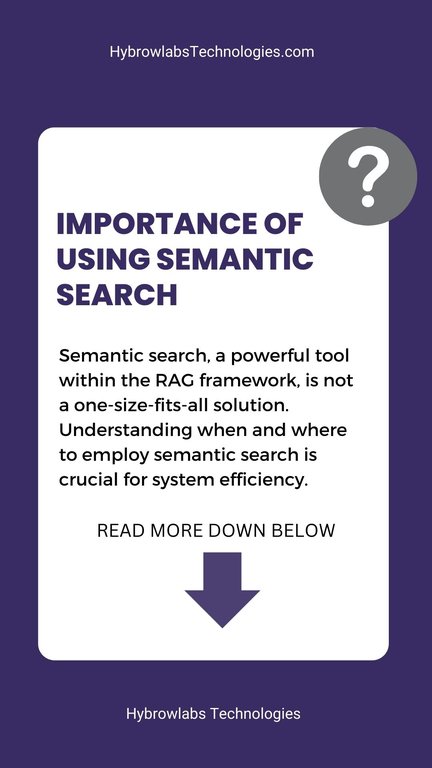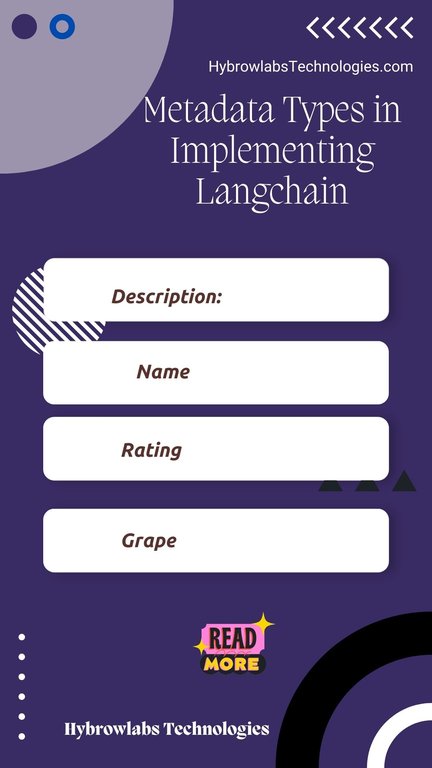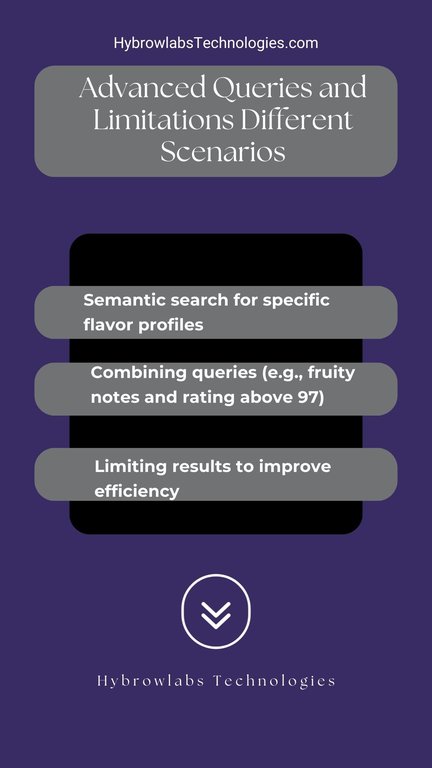In the realm of building Retrieval Augmented Generation (RAG) systems, developers often grapple with significant challenges. This article delves into the intricacies of these challenges and addresses a pivotal aspect of RAG systems—the judicious use of semantic search. Additionally, it introduces a groundbreaking concept known as self-querying retrieval.
A. Overview of Common Challenges in Building RAG Systems

Developing RAG systems presents a unique set of challenges that require careful consideration. From handling diverse data types to optimizing search methodologies, builders encounter obstacles that necessitate innovative solutions. As we explore these challenges, it becomes apparent that a nuanced approach is vital for the successful implementation of RAG systems.
B. Importance of Using Semantic Search Judiciously
Semantic search, a powerful tool within the RAG framework, is not a one-size-fits-all solution. Understanding when and where to employ semantic search is crucial for system efficiency. This section underscores the significance of using semantic search judiciously, emphasizing scenarios where traditional lookups may be more suitable. Striking the right balance between semantic and non-semantic searches is pivotal for optimal system performance.
C. Introduction to the Concept of Self-Querying Retrieval
Enter self-querying retrieval—a paradigm shift in the RAG landscape. This innovative concept introduces a step between retrieval and input, employing a large language model to reformulate queries. This not only captures semantic elements but also enables searches based on metadata. The section provides a foundational understanding of how self-querying retrieval functions and sets the stage for a deeper exploration of its implementation.
Self Querying Retrieval
A. Explanation of the Systems
Step between retrieval and input
- In traditional retrieval augmented generation (RAG) systems, the user input is directly fed into the retrieval process.
- Self querying retrieval introduces an intermediate step, creating a bridge between user input and the retrieval mechanism.
- This step involves reformatting the user query using a large language model, allowing for a more nuanced and context-aware representation.
Reformulating queries using a large language model
- The reformulation process leverages a large language model, such as OpenAI, to enhance the user query.
- The language model considers both semantic elements and the conversion of the query for effective metadata searches.
- This ensures that the system can perform searches not only on the textual content but also on associated metadata.
B. Use Cases for Self-Querying Retrieval
Search on typical database elements vs. semantic search
- Traditional database elements like integers or strings are best suited for direct lookups without relying heavily on semantic search.
- Semantic search becomes crucial when dealing with text, where extracting meaning is essential.
- For example, in a movie search, searching for an actor's name might be a direct lookup, while searching for movies with specific themes requires semantic understanding.
Extracting semantic meaning from text
- Self querying retrieval excels in scenarios where extracting semantic meaning from textual data is crucial.
- It is particularly effective when dealing with textual descriptions, allowing the system to comprehend and respond to the nuanced meaning within the text.
- This capability enhances the system's ability to understand user intent beyond basic keywords.
C. Importance of Choosing Appropriate Search Methods Based on Data Type
Examples with movie searches and music queries
- In movie searches, direct lookups for elements like release year may not require semantic search. However, thematic searches, such as finding movies with a specific mood, benefit from semantic understanding.
- Similarly, in music queries, searching for an artist may involve a direct lookup, but searching for songs with certain emotions requires semantic search.
Balancing semantic search and traditional lookups
- Achieving an effective balance between semantic search and traditional lookups is key to optimizing the performance of a self-querying retrieval system.
- For elements like years or names, traditional lookups may be more efficient, while semantic search adds value in understanding the context and meaning within the textual descriptions.
- This balance ensures that the system is versatile and can handle a wide range of user queries effectively.
Implementation in LangChain

In advanced Retrieval Augmented Generation (RAG) systems, effective implementation is crucial for optimal performance. In this section, we will delve into the practical aspects of implementing self-querying retrieval using LangChain, shedding light on the tools involved, data preparation, and the embedding process.
A. Overview of Tools Used
To embark on the journey of self-querying retrieval in LangChain, it's essential to understand the tools at play. The implementation leverages OpenAI embeddings, a powerful tool for converting textual information into numerical vectors. Additionally, Chroma serves as the vector store, facilitating efficient storage and retrieval of these embeddings. This combination forms the backbone of the system, providing the necessary infrastructure for self-querying retrieval.
B. Preparation of Data for Self-Querying Retrieval
Successful implementation begins with thoughtful data preparation. As an illustrative example, let's consider searching for wines using metadata. The metadata types play a pivotal role in shaping the effectiveness of the retrieval process. In the context of wines, key metadata includes the description, name, year, rating, grape, color, and country.
Example: Searching Wines with Metadata
Imagine we are dealing with a dataset containing various wines. Each wine is characterized by its description, name, year of production, rating, grape variety, color, and country of origin. This diverse set of metadata allows for nuanced and specific queries, enhancing the precision of the retrieval system.
Metadata Types
- Description: Captures the textual essence of the wine, crucial for semantic search.
- Name: Identifies the specific wine.
- Year: Represents the production year, allowing for temporal filtering.
- Rating: Indicates the quality or rating of the wine.
- Grape: Specifies the grape variety used in winemaking.
- Color: Denotes the color of the wine (e.g., red, white).
- Country: Indicates the country of origin.
C. Embedding Data into the Vector Store
The process of embedding data into the vector store is a pivotal step in enabling efficient retrieval. LangChain employs Chroma DB for this purpose, a dynamic database capable of handling large volumes of documents and their corresponding embeddings.
- Utilizing Chroma DB for Embedding Documents
Chroma DB serves as the repository for the wine data, where each document encapsulates the information associated with a specific wine. The embedding process involves converting the textual information, such as descriptions, names, and other metadata, into numerical vectors. These embeddings are then stored in Chroma DB, ensuring that the metadata and semantic information are readily accessible for retrieval.
Self Querying Retriever Setup
A. Configuring the self-querying retriever in LangChain
When it comes to setting up a self-querying retriever, the devil is in the details. This process involves fine-tuning the system to understand the data it will be handling. First and foremost, developers need to specify the metadata information, crucial for shaping the retrieval process. This includes defining data types (string, integer, float) and outlining metadata fields such as grape, name, year, country, color, rating, and description.
B. Setting up the large language model (OpenAI model)
The success of a self-querying retriever hinges on the choice and setup of the language model. In this instance, we employ the OpenAI model, known for its versatility and capabilities. However, it's worth noting that other language models like LLaMA-2 could seamlessly replace OpenAI based on specific project requirements.
C. Configuring the retriever
The heart of the operation lies in configuring the retriever to harmonize with both the language model and the vector store. This involves utilizing the Large Language Model (LLM) in tandem with the vector store, creating a synergy that enhances the overall search experience. Specific query and metadata fields are then designated, ensuring that the retriever understands the nuances of the data it is handling.
Advanced Queries and Limitations

A. Demonstrating different search scenarios
With the self-querying retriever in place, developers gain the ability to execute a spectrum of advanced queries. One such scenario involves filtering by color, a pertinent example being the retrieval of red wines. This approach circumvents the limitations of traditional semantic search, allowing for targeted results based on metadata.
1. Semantic search for specific flavor profiles
The system's prowess truly shines when engaging in semantic searches tailored for specific flavor profiles. Whether it's fruity notes or earthy undertones, the retriever sifts through the metadata to deliver precise and relevant results.
2. Combining queries (e.g., fruity notes and rating above 97)
In a sophisticated twist, developers can combine queries, such as searching for wines with fruity notes and a rating exceeding 97. This showcases the system's capability to handle complex search scenarios, providing users with highly tailored results.
3. Limiting results to improve efficiency
Recognizing the need for efficiency, the self-querying retriever allows for result limitation. This ensures that even with extensive datasets, users receive a manageable and pertinent subset of results, enhancing the overall user experience.
B. Handling query variations and errors
In a testament to the system's robustness, the self-querying retriever exhibits an adept ability to handle variations and errors in queries. From capitalization inconsistencies to minor spelling mistakes, the language model steps in to understand and correct queries, ensuring a seamless user experience.
Conclusion
In conclusion, the advanced capabilities of a self-querying retriever in the realm of RAG systems open up new possibilities for developers and users alike. The nuanced approach to metadata, coupled with the flexibility of combining semantic and traditional queries, marks a significant leap forward in the evolution of retrieval augmented generation. As we continue to explore the potential of self-querying retrieval, the fusion of metadata and language models promises to redefine the landscape of information retrieval. For more information on Rag 01, Visit Hybrowlabs official website.
FAQ
1. What is the role of metadata in self-querying retrieval, and why is it essential in advanced RAG systems?
In the context of self-querying retrieval, metadata plays a pivotal role in shaping the search process. It includes critical information such as data types (string, integer, float) and specific fields like grape, name, year, country, color, rating, and description. This metadata ensures a nuanced understanding of the data, allowing for tailored and efficient searches in advanced RAG systems.
2. How does the choice of a large language model impact the performance of a self-querying retriever in LangChain?
The selection and configuration of a large language model, such as the OpenAI model, significantly influence the effectiveness of a self-querying retriever. These language models contribute to rewriting queries and understanding the nuances of user input, enhancing the system's ability to perform complex searches. The choice of a suitable language model is crucial for achieving optimal results in advanced RAG systems.
3. Can the self-querying retriever handle complex search scenarios, such as combining semantic and traditional queries?
Yes, one of the strengths of a self-querying retriever is its ability to handle complex search scenarios. Developers can seamlessly combine queries, for example, searching for wines with specific flavor profiles (semantic) and a rating above a certain threshold (traditional). This flexibility allows for a more sophisticated and tailored search experience in advanced RAG systems.
4. How does the self-querying retriever address variations and errors in user queries, such as capitalization inconsistencies or spelling mistakes?
The self-querying retriever, equipped with a robust language model, demonstrates an adept ability to handle variations and errors in user queries. Whether it's capitalization inconsistencies or minor spelling mistakes, the language model steps in to understand and correct queries. This ensures a seamless user experience and contributes to the system's overall adaptability and user-friendliness.
5. In what ways does limiting results enhance the efficiency of a self-querying retriever in advanced RAG systems?
Limiting results is a key feature of the self-querying retriever that enhances system efficiency. In scenarios where extensive datasets are involved, limiting results ensures that users receive a manageable subset of relevant information. This not only improves the overall user experience by preventing information overload but also contributes to the system's responsiveness and efficiency in handling large volumes of data.



.jpg)


4df9a2.png)

.jpg)
fd8f11.png)

.jpg)
a3dc85.jpg)